Plant growth regulators types use on corn plantation
Plant growth regulators types use on corn plantation
Plant growth regulators are a class of pesticides extracted from organisms or synthesized to regulate plant growth and development.
It plays an important role in regulating the growth and development of crops, coordinating the balanced use of nutrients, improving crop production and quality, and reducing production risks.
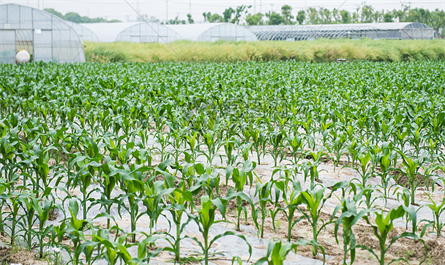
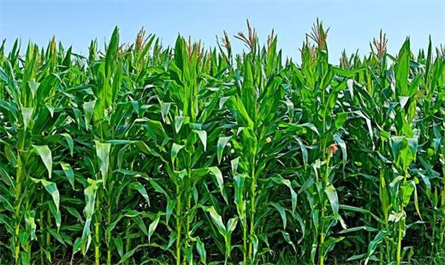
The plant growth regulators use in corn production commonly are: ethethylene, butanin, sodium nitrophenolate, polyphozole and so on.
1, Compound Sodium Nitrophenolate:
for plant growth promoters, in the maize flowering every 667 square meters of leaf spraying sCompound Sodium Nitrophenolate 4-6mg/L diluent 50kg application, can increase corn grain fullness, improve grain weight, increase production, promote corn early maturity.
Dosage forms are: 0.7%, 0.9%, 1.4%, 1.8%, 2.0% water agent, 0.9% wettable powder, 1.4% soluble powder.
2.D-A6:
After use DA-6 on corn, it can improve the germination rate, make plant grow stronger, make leaf color dark green, grain full , shortening bald point, increase the number of grains weight, improve resistance of lodging and reduce ripen early, increase production .
Usage: 6-10mg/L amine fresh ester medicated seed 12-24 hours, out of the water to dry after sowing, seedling can emerge in advance, seedling is strong, increase the weight of the root.
Spray once at seedling stage, young ears differentiation stage and heading stage.
3.Brassinolide:
It is a plant growth promoter. After spraying 0.01mg/kg brassinolide on corn plants before desanking, it can improve the growth characteristics of corn, reduce corn baldness, increase corn setting rate, promote early maturing and increase production significantly, and the dosage form is 0.01% brassinolide cream.
4, Ethephon:
for plant growth inhibitors, at the end of corn heart leaves, with 40% Ethephon water agent 50 ml and 15 kg of water per mu, spraying on the corn field, can reduce the plant height of about 25 cm, the stem segment becomes thicker, the double ears rate increases, the lodging resistance is enhance, the balding tip is reduce, the lateral root is increase, the male ear neck is short, and the ripen can be advanced 3-5 days.
The production of corn can be increase significantly by applying it in the large trumpet period.
5. Paclobutrazol:
as a plant growth regulatory retarder, it can reduce plant cell division and elongation, weaken the apical dominance significantly, and is conducive to plant dwarfism and prevent lodging.
Dosage forms are 10%, 15% wettable powder, 25% polybulozole suspension, 25% polybulozole cream.
6.Chlormequat chloride:
as a plant growth inhibitor, it can increase the chlorophyll content, deepen the leaf color, thicken the leaf, enhance photosynthesis, shorten the internode of the plant, and enhance the drought resistance, lodging resistance and cold resistance. Improve quality and production.
The dosage forms are 40%, 50% water, 50% cream and 80% soluble powder. Spraying 250mg/L liquid on the top of corn plants before corn pregnancy can dwarf the plants, reduce the ears setting position, avoid bald tip, make ears size bigger and grain full.
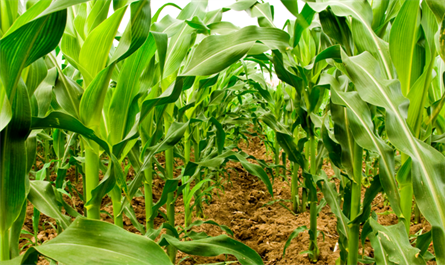
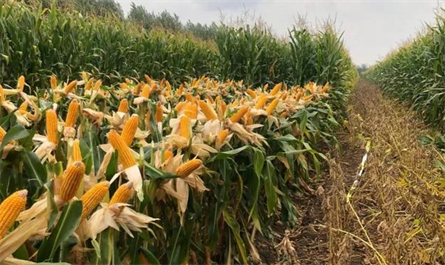
In the process of corn planting, the effects of plant growth regulators are:
1, Adjust and control the growth and development of corn, reduce plant height and ear height, cimprove the density of per unit area, increase the number of ears, ripen early , increase production.
2, with plant growth regulators soaked or mixed seed corn, it's conducive to breaking the seed dormancy, promote seed rooting, germination, to ensure germination rate, corn seedling potential robust.
3. The application of growth regulators to maize can increase the maize leaf area, shorten the functional leaf internode, improve the photosynthetic efficiency, accelerate the synthesis of photosynthetic products and transfer to the direction of fruit ear; The cob of the ear becomes longer and thinner, the kernel thickens, and the weight of 100 grains increases.
4. After the application of growth regulators,the compact shape of corn plants reduces field shade and improves field ventilation and light transmission conditions.
5. The application of plant growth regulators can promote the root growth of corn plants effectively , increase the root amount of above ground airborne roots and underground secondary roots by 1 times, increase the root absorption area by 2 to 3 times, ensure the supply of nutrients, make corn thrive, stem toughness, improve drought resistance and lodging resistance.
6. After the application of growth regulators to maize, the gestation time increased, and the adverse effects of oligoillumination, low temperature and rain on the growth of maize could be reduce.
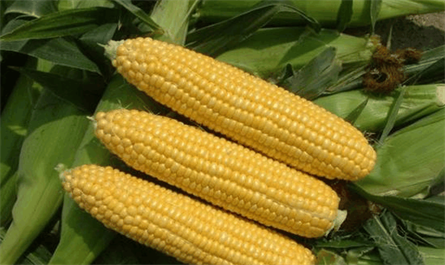
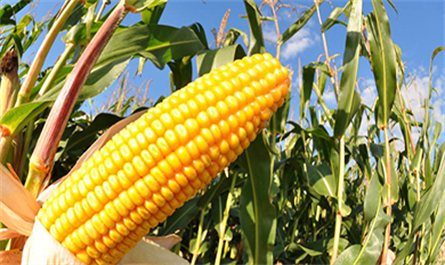
Precautions for promoting the application of plant growth regulators:
1. Plant growth regulators are strictly required for the application period. The application of plant growth regulators in the non-applicable period may have a negative effect on the growth of corn.
2, plant growth regulators on the application of strict requirements Plant growth regulators dosage is small, the ratio and application methods have strict requirements.
3. Varieties of plant growth regulators should be reasonably selected
4, the agricultural technology extension department should increase technical guidance and training efforts, the agricultural technology extension department should organize the promotion and application of plant growth regulators, and publicize and promote the role of plant growth regulators, variety selection, use methods and precautions to farmers in a timely manner.
5, spray as far as possible in the early and late day, corn leaves do not roll to use.
6, spray within 5 hours after the rain can be re-sprayed, but reduce the amount of medicine.
7, do not arbitrarily increase the use of concentration and dosage, so as to avoid drug damage.
8. Tilling after harvesting corn to prevent it from affecting subsequent crops.
Plant growth regulators are a class of pesticides extracted from organisms or synthesized to regulate plant growth and development.
It plays an important role in regulating the growth and development of crops, coordinating the balanced use of nutrients, improving crop production and quality, and reducing production risks.


The plant growth regulators use in corn production commonly are: ethethylene, butanin, sodium nitrophenolate, polyphozole and so on.
1, Compound Sodium Nitrophenolate:
for plant growth promoters, in the maize flowering every 667 square meters of leaf spraying sCompound Sodium Nitrophenolate 4-6mg/L diluent 50kg application, can increase corn grain fullness, improve grain weight, increase production, promote corn early maturity.
Dosage forms are: 0.7%, 0.9%, 1.4%, 1.8%, 2.0% water agent, 0.9% wettable powder, 1.4% soluble powder.
2.D-A6:
After use DA-6 on corn, it can improve the germination rate, make plant grow stronger, make leaf color dark green, grain full , shortening bald point, increase the number of grains weight, improve resistance of lodging and reduce ripen early, increase production .
Usage: 6-10mg/L amine fresh ester medicated seed 12-24 hours, out of the water to dry after sowing, seedling can emerge in advance, seedling is strong, increase the weight of the root.
Spray once at seedling stage, young ears differentiation stage and heading stage.
3.Brassinolide:
It is a plant growth promoter. After spraying 0.01mg/kg brassinolide on corn plants before desanking, it can improve the growth characteristics of corn, reduce corn baldness, increase corn setting rate, promote early maturing and increase production significantly, and the dosage form is 0.01% brassinolide cream.
4, Ethephon:
for plant growth inhibitors, at the end of corn heart leaves, with 40% Ethephon water agent 50 ml and 15 kg of water per mu, spraying on the corn field, can reduce the plant height of about 25 cm, the stem segment becomes thicker, the double ears rate increases, the lodging resistance is enhance, the balding tip is reduce, the lateral root is increase, the male ear neck is short, and the ripen can be advanced 3-5 days.
The production of corn can be increase significantly by applying it in the large trumpet period.
5. Paclobutrazol:
as a plant growth regulatory retarder, it can reduce plant cell division and elongation, weaken the apical dominance significantly, and is conducive to plant dwarfism and prevent lodging.
Dosage forms are 10%, 15% wettable powder, 25% polybulozole suspension, 25% polybulozole cream.
6.Chlormequat chloride:
as a plant growth inhibitor, it can increase the chlorophyll content, deepen the leaf color, thicken the leaf, enhance photosynthesis, shorten the internode of the plant, and enhance the drought resistance, lodging resistance and cold resistance. Improve quality and production.
The dosage forms are 40%, 50% water, 50% cream and 80% soluble powder. Spraying 250mg/L liquid on the top of corn plants before corn pregnancy can dwarf the plants, reduce the ears setting position, avoid bald tip, make ears size bigger and grain full.


In the process of corn planting, the effects of plant growth regulators are:
1, Adjust and control the growth and development of corn, reduce plant height and ear height, cimprove the density of per unit area, increase the number of ears, ripen early , increase production.
2, with plant growth regulators soaked or mixed seed corn, it's conducive to breaking the seed dormancy, promote seed rooting, germination, to ensure germination rate, corn seedling potential robust.
3. The application of growth regulators to maize can increase the maize leaf area, shorten the functional leaf internode, improve the photosynthetic efficiency, accelerate the synthesis of photosynthetic products and transfer to the direction of fruit ear; The cob of the ear becomes longer and thinner, the kernel thickens, and the weight of 100 grains increases.
4. After the application of growth regulators,the compact shape of corn plants reduces field shade and improves field ventilation and light transmission conditions.
5. The application of plant growth regulators can promote the root growth of corn plants effectively , increase the root amount of above ground airborne roots and underground secondary roots by 1 times, increase the root absorption area by 2 to 3 times, ensure the supply of nutrients, make corn thrive, stem toughness, improve drought resistance and lodging resistance.
6. After the application of growth regulators to maize, the gestation time increased, and the adverse effects of oligoillumination, low temperature and rain on the growth of maize could be reduce.


Precautions for promoting the application of plant growth regulators:
1. Plant growth regulators are strictly required for the application period. The application of plant growth regulators in the non-applicable period may have a negative effect on the growth of corn.
2, plant growth regulators on the application of strict requirements Plant growth regulators dosage is small, the ratio and application methods have strict requirements.
3. Varieties of plant growth regulators should be reasonably selected
4, the agricultural technology extension department should increase technical guidance and training efforts, the agricultural technology extension department should organize the promotion and application of plant growth regulators, and publicize and promote the role of plant growth regulators, variety selection, use methods and precautions to farmers in a timely manner.
5, spray as far as possible in the early and late day, corn leaves do not roll to use.
6, spray within 5 hours after the rain can be re-sprayed, but reduce the amount of medicine.
7, do not arbitrarily increase the use of concentration and dosage, so as to avoid drug damage.
8. Tilling after harvesting corn to prevent it from affecting subsequent crops.



